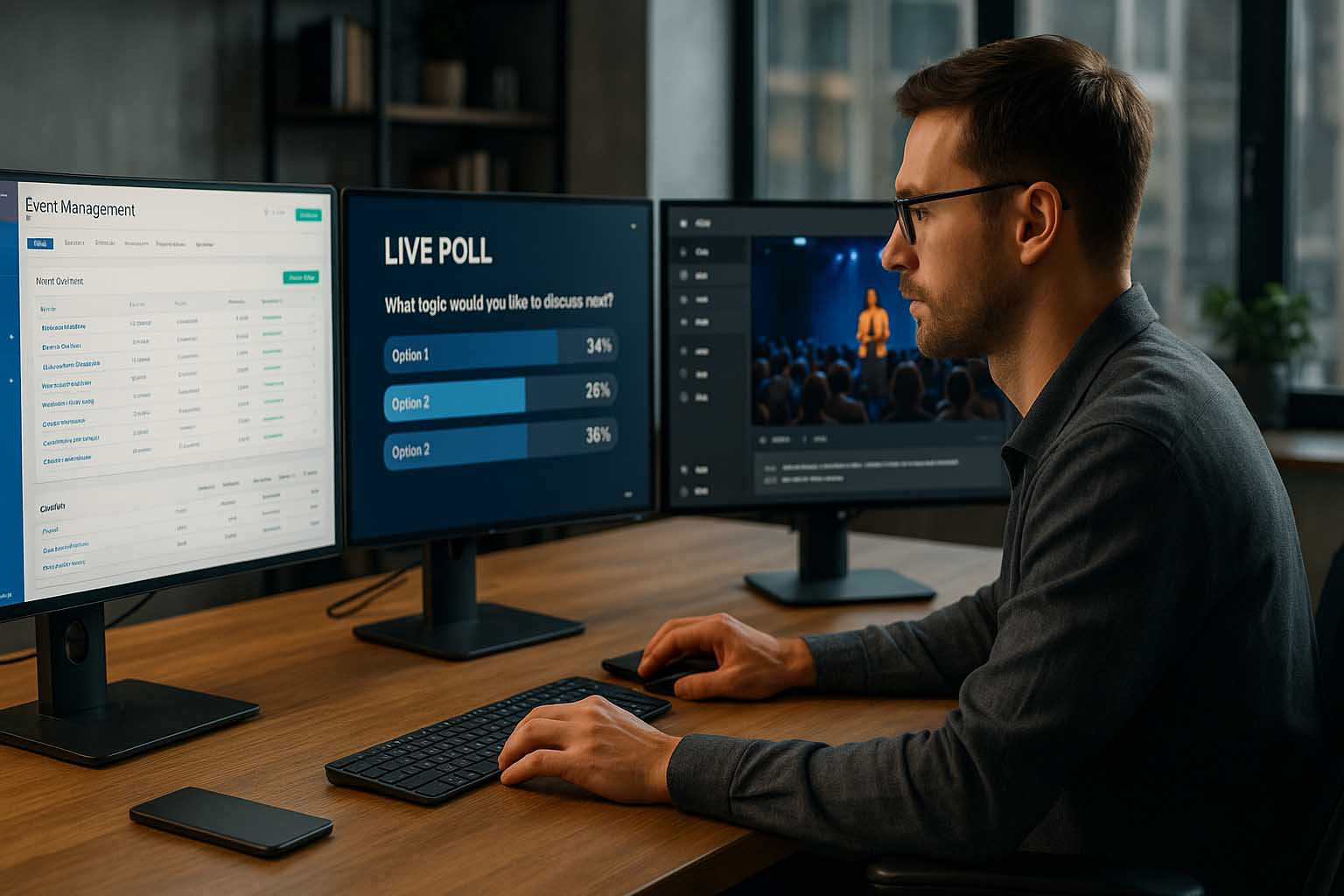A Guide to Modern Event Technology
Technology has transformed every aspect of how we plan and experience conferences. A modern event planner’s toolkit is no longer just a clipboard and a spreadsheet; it’s a powerful suite of digital tools. From using an AI assistant to brainstorm creative session ideas to deploying sophisticated software for registration, technology acts as a co-pilot for today’s event professionals.
But with so many options available, choosing the right technology can feel overwhelming. This guide will walk you through the key categories of modern event tech, helping you understand which tools can have the biggest impact on your conference.
The Modern Tech Stack
This article provides an overview of the essential technologies that power today’s conferences. Here are the key areas we will cover:
- Event Management Platforms: We’ll explore the all-in-one software that handles registration, marketing, and communication.
- On-Site Experience Tech: We’ll look at the tools that create a seamless and interactive experience for attendees, from check-in to live polling.
- Hybrid and Virtual Event Tools: We will discuss the technology needed to connect in-person and remote audiences for a unified experience.
- Post-Event Analytics: We’ll touch on how to use data from these tools to measure success and plan for the future.
The Foundation: Event Management Platforms
At the core of modern event and conference planning is the event management platform. This is your all-in-one command center for the entire event lifecycle. These platforms typically combine several key functions into a single, integrated system.
What they usually include:
- Website and Registration: Tools to create a professional event website and handle online ticket sales and registration.
- Email Marketing: Features to send out announcements, reminders, and follow-up emails to your attendee list.
- Agenda and Speaker Management: A central place to build your schedule and manage speaker profiles and session details.
Using an integrated platform saves a huge amount of time. It prevents you from having to juggle multiple, disconnected tools. It also ensures that all your event data, from ticket sales to attendee feedback, is stored in one place.
Enhancing the On-Site Experience
Once your attendees arrive, technology can make their experience smoother, more interactive, and more enjoyable. The goal is to remove logistical friction and create more opportunities for connection and learning.
Seamless Check-In
Long queues at the registration desk can create a poor first impression. Modern check-in solutions speed up this process significantly.
- QR Code Scanning: Attendees can receive a QR code via email, which they can scan at a kiosk for instant check-in.
- RFID Technology: RFID-enabled name badges can be pre-programmed and automatically checked in as attendees walk through an entry gate.
Interactive Session Tools
To keep your audience engaged, you can use a variety of in-session technologies.
- Live Polling and Q&A: Mobile apps allow attendees to vote in live polls and submit questions to speakers from their phones. This boosts participation and gives you real-time feedback.
- Digital Whiteboards: For workshops and breakout sessions, digital whiteboards allow for collaborative brainstorming that can be saved and shared instantly.
These tools are crucial for creating a dynamic event that goes beyond simple presentations. They are a key part of your overall conference strategy.
Powering Hybrid and Virtual Events
In today’s global environment, many conferences need to cater to both an in-person and a remote audience. The right technology is essential for bridging the gap between these two groups.
The most important tool is a reliable live-streaming platform. This platform should offer high-quality video and audio, as well as features for remote audience interaction, such as a live chat and Q&A module. For more complex events, you might look for a platform that supports virtual sponsor booths, one-on-one video networking, and multiple simultaneous session streams. The key is to make remote attendees feel like active participants, not just passive viewers.
The Rise of AI in Event Planning
Artificial intelligence is becoming an increasingly valuable tool for event planners. An AI assistant can help with a wide range of tasks, from brainstorming session topics to drafting marketing emails. AI-powered chatbots can be added to your event website to answer common attendee questions 24/7, freeing up your team’s time.
AI can also be used to personalize the attendee experience. Some event apps use AI to analyze an attendee’s profile and recommend the most relevant sessions and networking connections for them. This level of smart personalization can significantly increase the value an attendee gets from your event.
Measuring Success with Data
One of the biggest advantages of using modern event tech is the data it provides. After your event is over, you can analyze a wealth of information to measure your success and plan for the future.
You can track metrics like:
- Ticket sales and revenue
- Session attendance and popularity
- Audience engagement levels during polls
- Attendee feedback from post-event surveys
This data gives you concrete evidence of what worked and what didn’t. It allows you to prove the event’s return on investment to your stakeholders and make data-driven decisions to improve your next conference.
The modern event planner has an incredible array of technological tools at their disposal. By thoughtfully selecting a tech stack that aligns with your goals, you can create a conference that is more efficient to run, more engaging for your audience, and more impactful for your brand.
